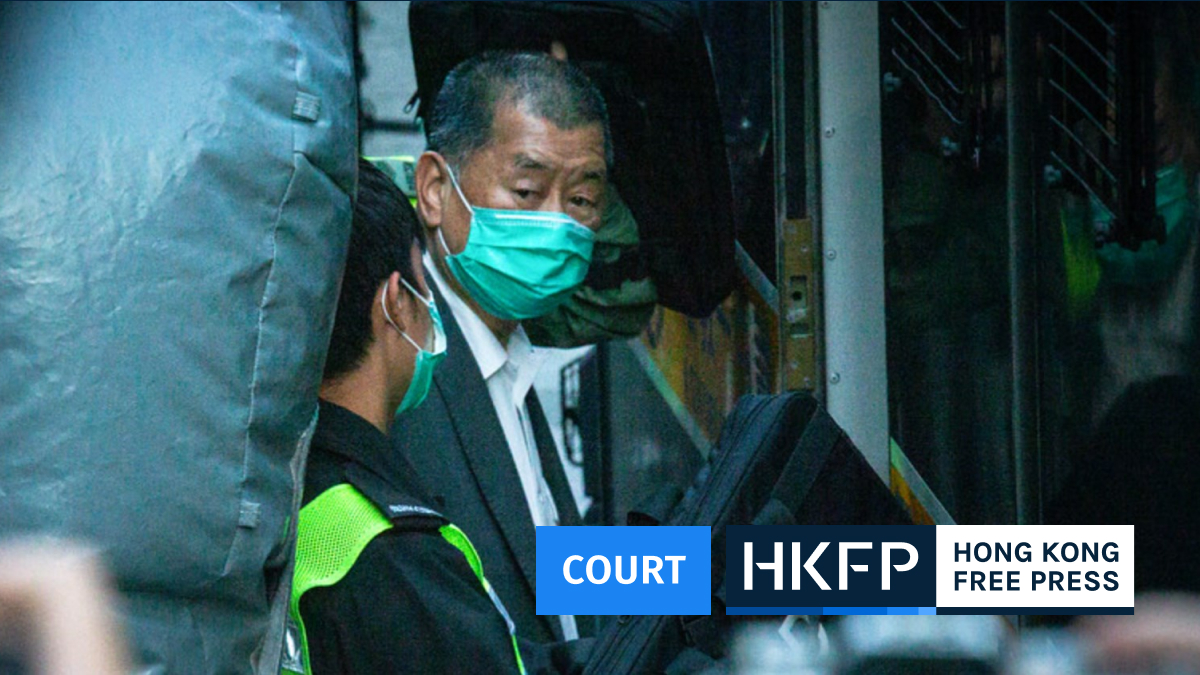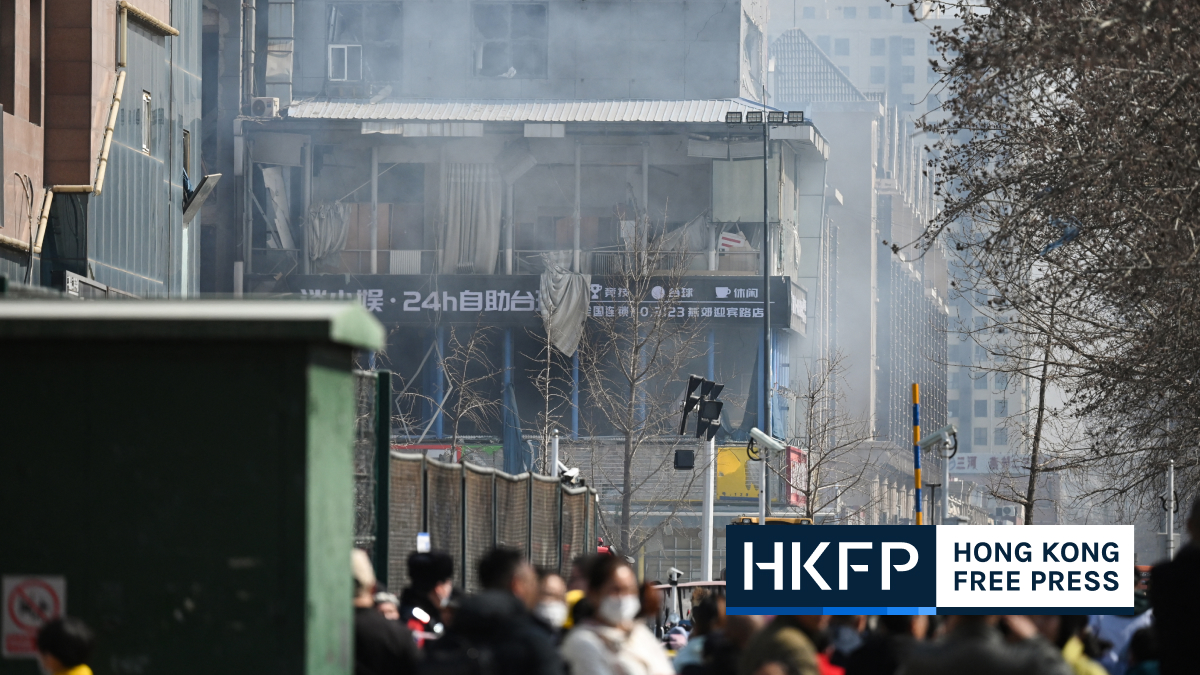Throughout the Covid-19 pandemic, even when humans hoping to cross Hong Kong’s border with mainland China were subject to at least 21 days of quarantine, one group was able to travel into and out of the city with relative ease: racehorses.
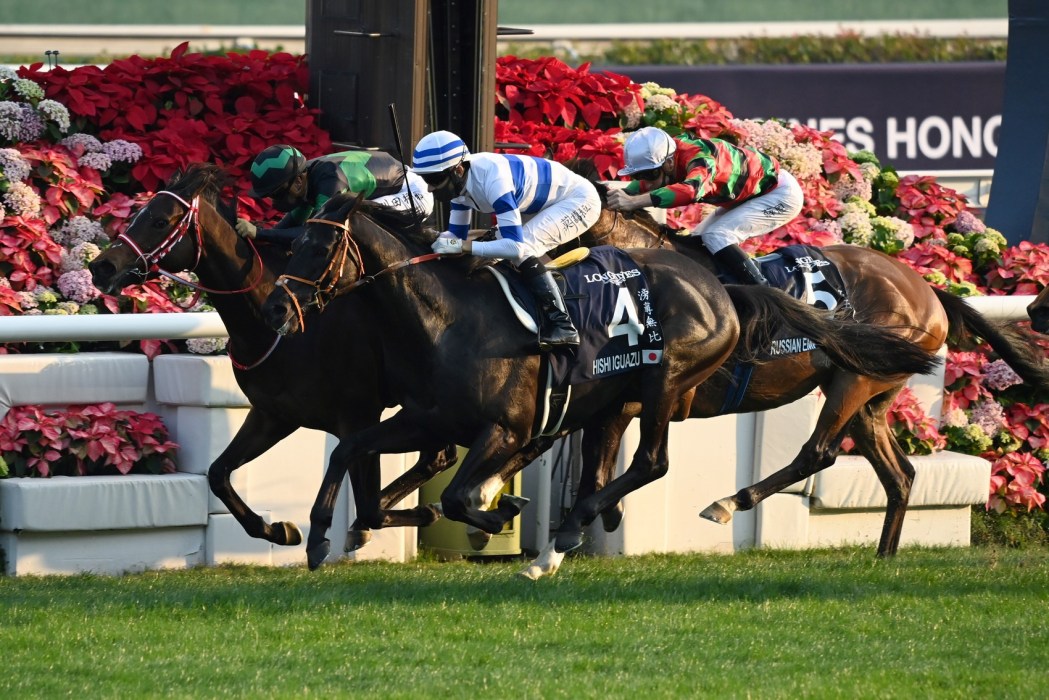
Last September, the Hong Kong Jockey Club (HKJC) – which holds a government-granted monopoly over the city’s betting and horse racing industries – announced a record breaking HK$290 billion turnover for 2022-23. “In a year in which Hong Kong was hard hit by the pandemic, the Club raced on,” it said, adding that – in turn – it returned “a record HK$33.6 billion to the community.”
In part, horses under the HKJC were able to race on in the city because they were able to continue to train in mainland China – largely thanks to the Equine Disease Division, a branch of the Agriculture, Fisheries and Conservation Department (AFCD) that established bio-secure bubbles on either side of the border long before most of us were familiar with the concept.
Equine Disease Free Zone
“The Equine Disease Division started in June 2017, and the main objective was to facilitate the movement of horses from Hong Kong to Conghua,” Patrick Lau, a senior veterinarian with AFCD who specialises in equine disease, told HKFP.

About four hours’ drive by cross-border horse float from the city, the Hong Kong Jockey Club Conghua Racecourse was designed and built as the equestrian venue for the 2010 Asian Games in Guangzhou, in mainland China, before being transformed into a supplemental stable and training ground for Hong Kong’s race horses.
“Now, Conghua is what is called an Equine Disease Free Zone [EDFZ],” Lau said.
These zones are established according to guidelines from the World Organisation for Animal Health. Contrary to their name, they are not completely free from disease – “that would be impossible,” as Lau said – but are free from specified multiple diseases.
“We have 14 equine-specific diseases that we try to keep out,” Lau said. Among the conditions are equine influenza, equine infectious anaemia, and equine viral arteritis. “Since 2017, we have kept it at zero cases of these 14 [diseases] successfully,” he added.
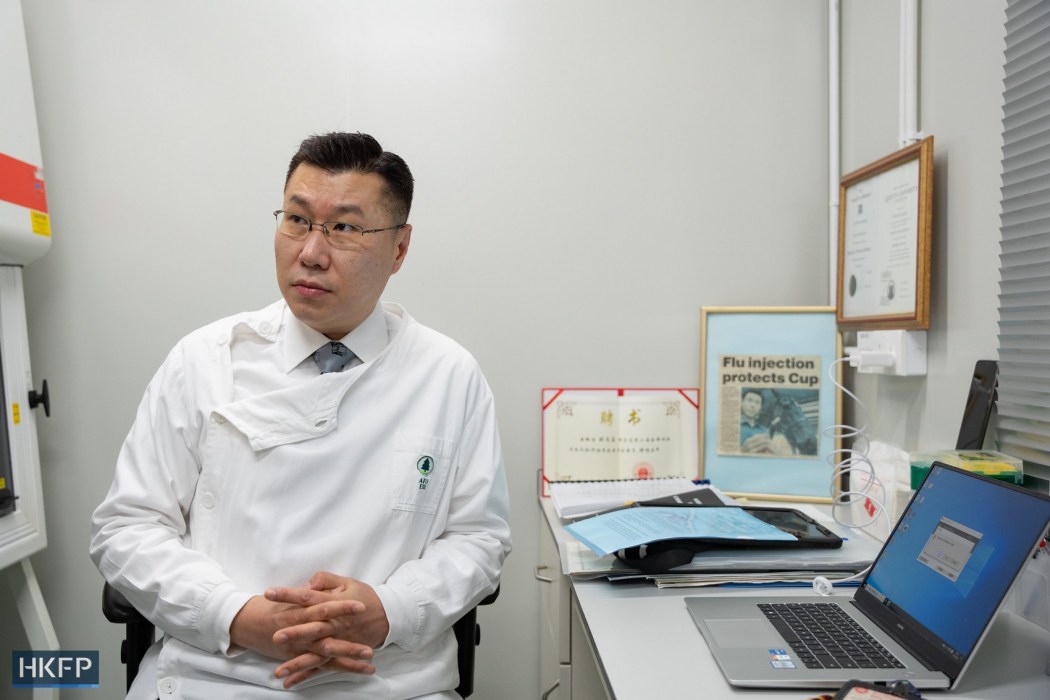
There are some 1,200 race horses in Hong Kong, all of which arrive in the city from overseas to participate in the sport. After undergoing a pre-export quarantine, the horses are whisked off to an HKJC quarantine facility in Sha Tin for a further 14 days’ isolation before being allowed to move between Hong Kong and Conghua – which is where Lau comes in.
He leads a team of four permanent staff – himself and three veterinary technicians – at the Equine Disease Division, although part-time staff are hired to help with horse inspections.
“For each of the horses that travels to Conghua northbound, I’m responsible for checking them healthwise – that they’re fit for travel, they’ve got their vaccinations up to date, and their fever cases have been cleared of all those 14 diseases,” Lau said.
Samples are taken and tested in a clean, clinical laboratory currently located in a combination house on the grounds of the Tai Lung Veterinary Laboratory, itself perched on the edge of Fanling Golf Course.

“We are in the process of building up our capacity and scope with our laboratory,” Lau said, adding that he was looking forward to moving into the division’s permanent home in the Animal Management and Animal Welfare Building Complex currently under construction in Kai Tak. “I think we have the top two floors, so that’s exciting as well, but at the same time it means a lot of work,” he said of the move, which is expected to happen in 2024.
Accredited through the Australian National Association of Testing Authorities, the Equine Disease Division is currently certified to test for seven of the 14 diseases. “Previously, a lot of the diseases had to be sent out to Britain, the States, for confirmation and testing, screening even,” Lau said. “Now, we can pretty much do a lot of the testing ourselves.”
Bubble to bubble security
After the horses have been cleared for travel, Lau issues an animal health certificate. “And same vice versa, coming back to Hong Kong,” Lau said.
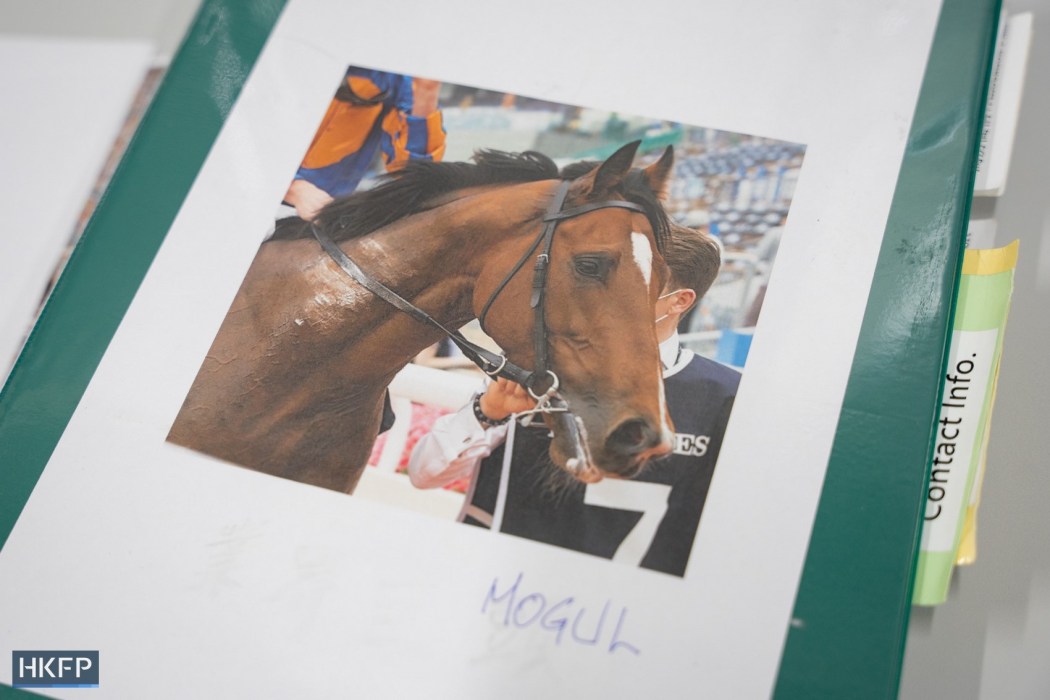
“It’s pretty much bubble to bubble,” he added. With its high biosecurity – Lau and his team are required to shower and change to enter the EDFZ – “it literally looks like Jurassic Park.”
Occasionally, Lau said, horses are withdrawn from travel. “It would be the odd occasion that they had a fever two days ago, it wasn’t recorded – more or less it’s a human error rather than really something has happened,” he said.
Lau has, however, been on the front line of a major equine outbreak before.
In his office, a framed newspaper cutting with the headline “Flu injection protects cup” shows a young Lau standing next to a bay horse brandishing a syringe. “That was me in 2007,” he said, “when Australia had a big outbreak of equine influenza.”
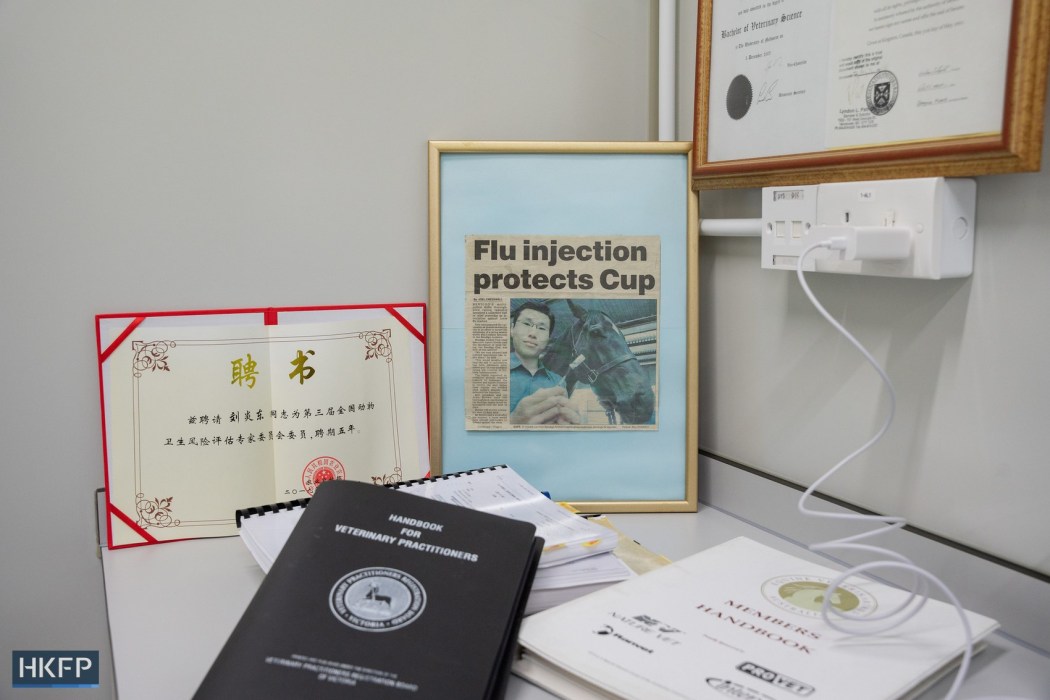
Because of strict border controls in place to stem the import of exotic pests and diseases into Australia, that was its first horse flu outbreak. To make matters worse, the horse population had never been exposed to the virus and, not being vaccinated, were fully susceptible. At its peak, 47,000 horses were infected in New South Wales.
Lau, who was working as a private veterinarian in Australia at the time after graduating as a doctor of veterinary medicine from the University of Melbourne in 2005, mobilised to contain and stop the spread of the virus – helping with sampling, testing, and vaccinating. “We started vaccination, for me it was a milestone,” he said.
Within six months, the disease was eradicated.
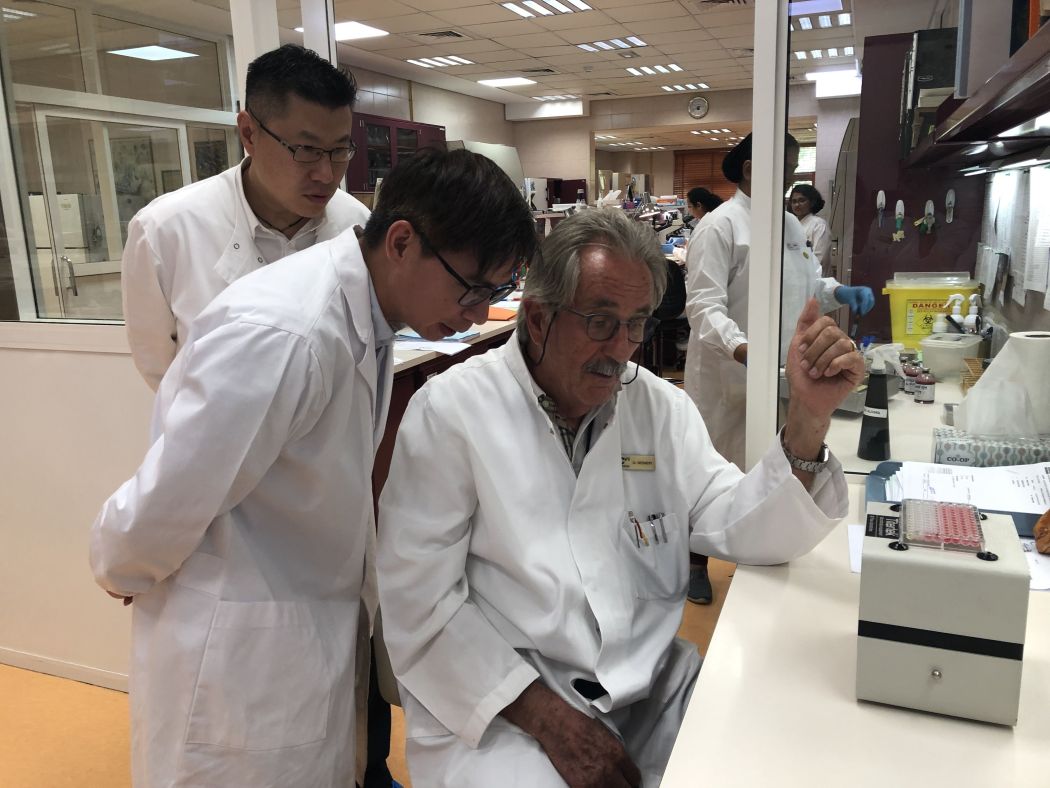
This experience was fundamental for Lau’s future. “That’s why I’m now… developing this biosecurity and control,” he said.
“You can’t say it’s OK to have outbreaks, but you’re prepared for them. That’s the whole thing I’m promoting as well. Like the whole thing with Covid-19… you take the experience and hopefully you learn.”
Lau said his team was not too badly affected by the pandemic. “We were allowed to do a bit of shift work… we were set up in isolated labs, you had your lunch in shifts… it was teamwork and we worked around the policies and we managed,” he said.
In a number of ways, the horses – that continued to travel across the border for training and back again for racing – were less affected than many in the city.
“But the good thing was, explaining this bubble to bubble idea, I think people got it.”
Correction 22/5/2023: An earlier version of this article incorrectly stated that the Equine Disease Division would move into its permanent home in the Animal Management and Animal Welfare Building Complex in Kai Tak in 2027, when in fact it should make the move in 2024. We regret the error.
Support HKFP | Policies & Ethics | Error/typo? | Contact Us | Newsletter | Transparency & Annual Report | Apps
Help safeguard press freedom & keep HKFP free for all readers by supporting our team

LATEST FROM HKFP
HKFP has an impartial stance, transparent funding, and balanced coverage guided by an Ethics Code and Corrections Policy.
Support press freedom & help us surpass 1,000 monthly Patrons: 100% independent, governed by an ethics code & not-for-profit.






